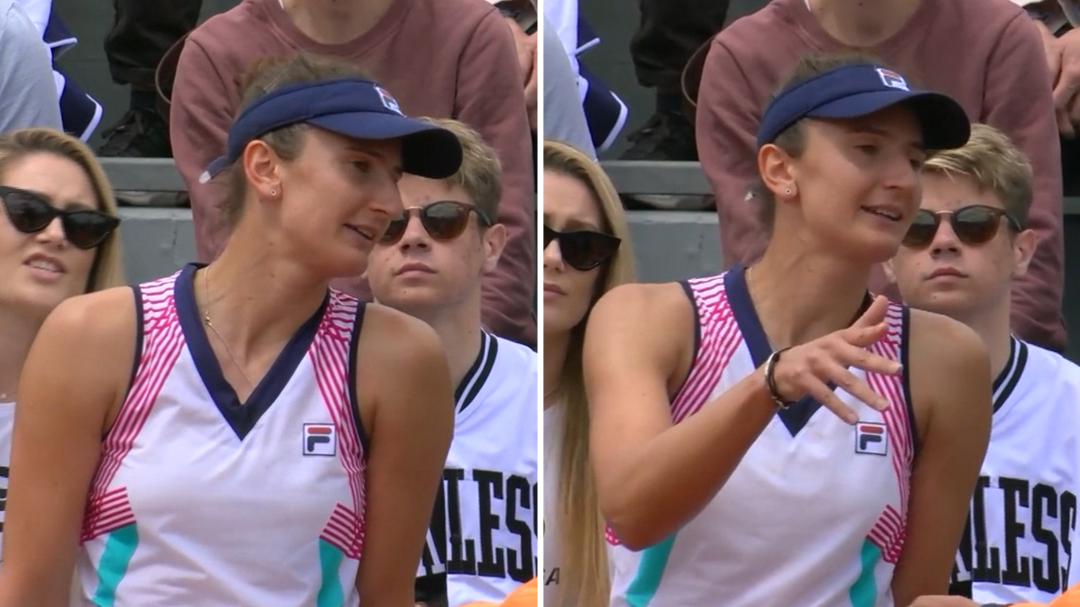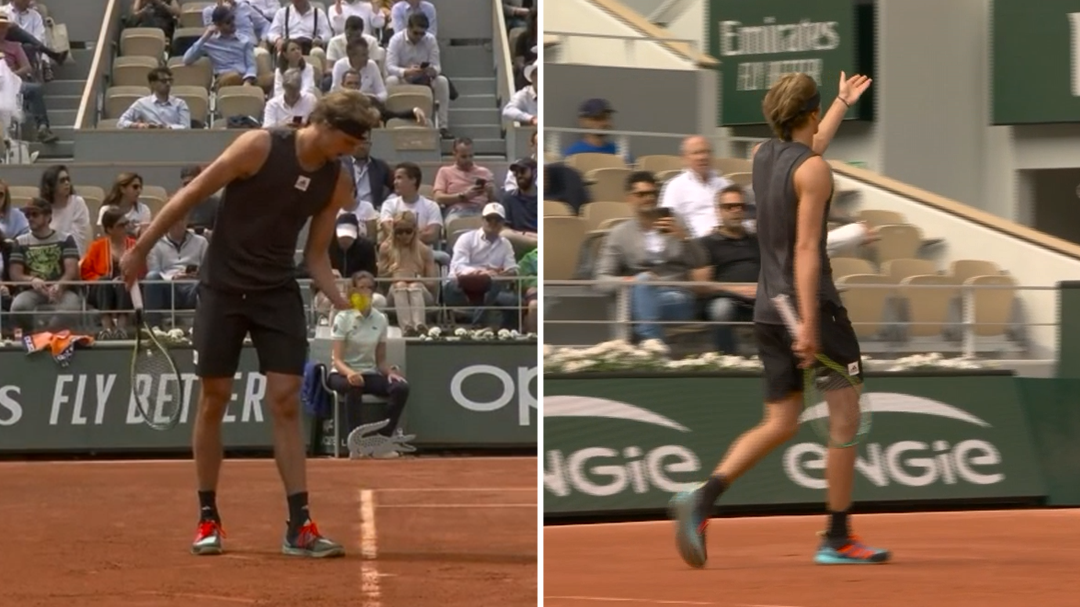Grand Slam losses by high-ranked, well-known and accomplished players to, well, lower-ranked, lesser-known and less-accomplished opponents offer a rare opportunity for those unheralded winners to enjoy the spotlight.
And for the first time in nearly a half-century, just three of the top 10 seeds in the women’s draw at Roland-Garros made it to the round of 32.
So meet Leolia Jeanjean: age 26; from Montpellier, France; ranked 227th; a wildcard entry after never before being a Slam participant; seemingly destined as a kid for great things in tennis, so much so that there were sponsorship deals before she was old enough to attend high school, until, that is, an injured knee derailed things.
READ MORE: Star wins after making child cry in ‘horrible’ act
READ MORE: Horror crash left driver unable to speak for a month
READ MORE: Haas saga could cost NSW beast his Origin spot
She left the sport for a couple of years, wound up moving to the US, where she played college tennis at Baylor, then Arkansas, then Lynn University in Boca Raton, Florida, while pursuing her studies in finance. At Lynn, she went unbeaten in singles and doubles, so it occurred to her maybe a professional career was worth a try.
Good choice for Jeanjean. Bad one for her foes so far at Roland Garros, including Karolina Pliskova, a two-time major finalist and the No.8 seed, who was unable to offer much resistance Thursday and was beaten 6-2, 6-2 by Jeanjean in the second round.
“Even me, I don’t have an explanation. I don’t even realise what’s happening,” Jeanjean said. “It’s my first Grand Slam. I thought I would have lost in the first round in two sets — and I found myself beating a top-10 player. So, honestly, I have nothing else to say. I don’t really know how it’s possible.”
Watch Roland-Garros on 9Gem and 9Now or every match, ad-free, live and on demand with courts in 4K, on Stan Sport.
A year ago at this time, she was ranked outside the top 800 and winning hundreds of dollars at low-level International Tennis Federation events. No matter what happens in her next match, she’ll leave Paris with at least $190,000 (AUD).
“When I stopped playing when I was young, I just wanted to give myself another chance,” Jeanjean said. “Because in my head, since I was good when I was like 14, 15, I’m like, ‘Why can’t I be good 10 years later?’ So that’s why, yeah, I (took a) chance. And so far it’s working.”
Asked whether he also was stunned by it all, Jeanjean’s coach of three months, Thomas Delgado, quickly replied, straight-faced: “No.” And then he chuckled, before continuing: “Well, yes, I am. … On one side, I’m surprised she did it. But on the other, I knew she could.”

No.9 Danielle Collins, the Australian Open runner-up in January, departed, too, eliminated by 50th-ranked Shelby Rogers 6-4, 6-3 in a matchup between Americans.
According to the WTA, the previous time three or fewer top-10 women’s seeds got to the French Open’s round of 32 was in 1976; in those days, only eight players were seeded to begin with in a field of 64, half of the current tournament size.
Pliskova and Collins joined No.2 Barbora Krejcikova — the 2021 champion who was beaten in the first round, then pulled out of doubles, because she tested positive for COVID-19 — No.4 Maria Sakkari, No.5 Anett Kontaveit, No.6 Ons Jabeur and No.10 Garbiñe Muguruza, who all were gone by Thursday (AEST).
The remaining trio, all in the top half of the bracket, won second-round matches: No.1 Iga Swiatek ran her winning streak to 30 matches, the longest in women’s tennis since Serena Williams had a 34-match run in 2013, by overwhelming Alison Riske 6-0, 6-2; No.3 Paula Badosa recovered from a mid-match lapse to get past Kaja Juvan 7-5, 3-6, 6-2; No.7 Aryna Sabalenka defeated Madison Brengle 6-1, 6-3.
“I could feel like, ‘Wow, this is good, because they are losing.’ But in this case, I’m more like, ‘OK, pay attention, because anything can happen,’” said Badosa, a quarterfinalist in Paris a year ago. “You saw it today.”
The men’s draw certainly has seen some excitement — including five-set victories after being match point down for both No.3 Alexander Zverev and No.6 Carlos Alcaraz — but all 12 of the highest seeds advanced to the third round, the first time that’s happened at the French Open since 2009, according to the ATP.

No.4 Stefanos Tsitsipas, the runner-up to Novak Djokovic at Roland-Garros last year, saved four set points after falling behind 6-2 in the last tiebreaker before putting away 134th-ranked qualifier Zdenek Kolar 6-3, 7-6 (8), 6-7 (3), 7-6 (6) in a 4-hour, 6-minute tussle.
Kolar never had won a tour-level match until this week, but his relentless ball-tracking left Tsitsipas acknowledging at the end: “He drove me crazy. Yeah, it was really frustrating. … Not easy. Not easy.”
Pliskova has been ranked No.1, was the runner-up at Wimbledon last year and the US Open in 2016 and reached the Roland Garros semifinals in 2017.
“One thing is, of course, how I played,” Pliskova said, “and I think (the) other thing is how she played.”
Jeanjean trailed 2-1 before collecting nine consecutive games, displaying some of the strategic smarts that Delgado praised as one of her greatest attributes, saying: “She knows where to play, how to play, when to play.”
Always has. Caroline Garcia, a French player who used to be ranked No.4, knew Jeanjean way back when. They were doubles teammates at a series of youth events in Mexico, Costa Rica, Venezuela and Italy in 2010, when Garcia was 16 and Jeanjean was 14.
“She was like the best of the best when she was 10, 12, and everyone thought she was going to be unbelievable. And then she completely disappeared. … Now, she makes her way again,” Garcia said, “and she can prove to everyone, like, if you believe it, you can do it.”
For a daily dose of the best of the breaking news and exclusive content from Wide World of Sports, subscribe to our newsletter by clicking here!

